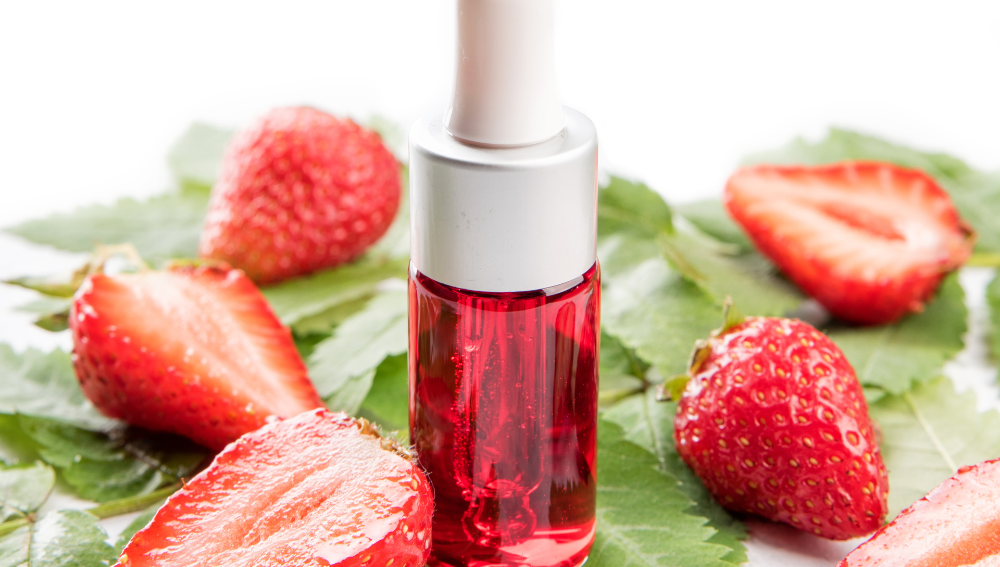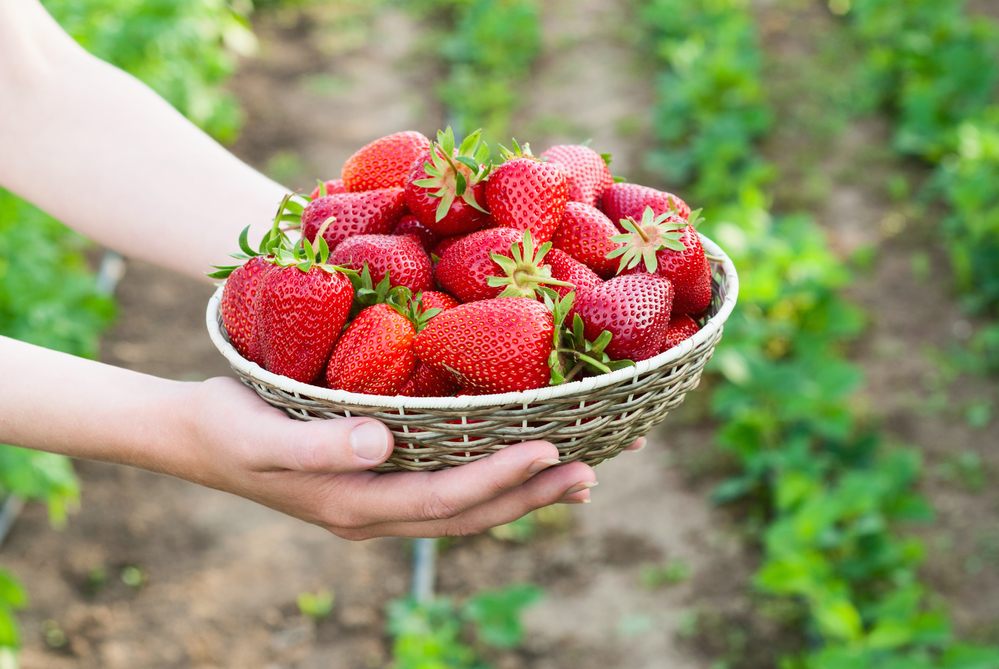Strawberries are a popular and versatile fruit enjoyed by many for their vibrant color, sweet taste, and appealing aroma. They are used in numerous culinary applications, from salads and desserts to jams and smoothies.
Nonetheless, there can be situations when strawberries are unavailable, too expensive, or not suitable for consumption due to allergies or dietary restrictions.
In such cases, it is essential to identify suitable substitutes for strawberries that offer a similar flavor profile and nutritional value.
Understanding the distinct flavor components of strawberries and the role they play in various dishes is crucial to finding an appropriate alternative.
Factors to consider when choosing a substitute include the desired taste, texture, appearance, and nutritional content.
Exploring different fruits and their culinary properties can help you discover the best option to replace strawberries in your recipes without compromising on quality or satisfaction.
Key Takeaways
- Identify suitable substitutes for strawberries based on flavor, texture, and nutritional value
- Consider desired taste, appearance, and culinary properties when choosing a substitute
- Explore various fruits and their suitability in different recipes as strawberry alternatives
Understanding Strawberry Flavor
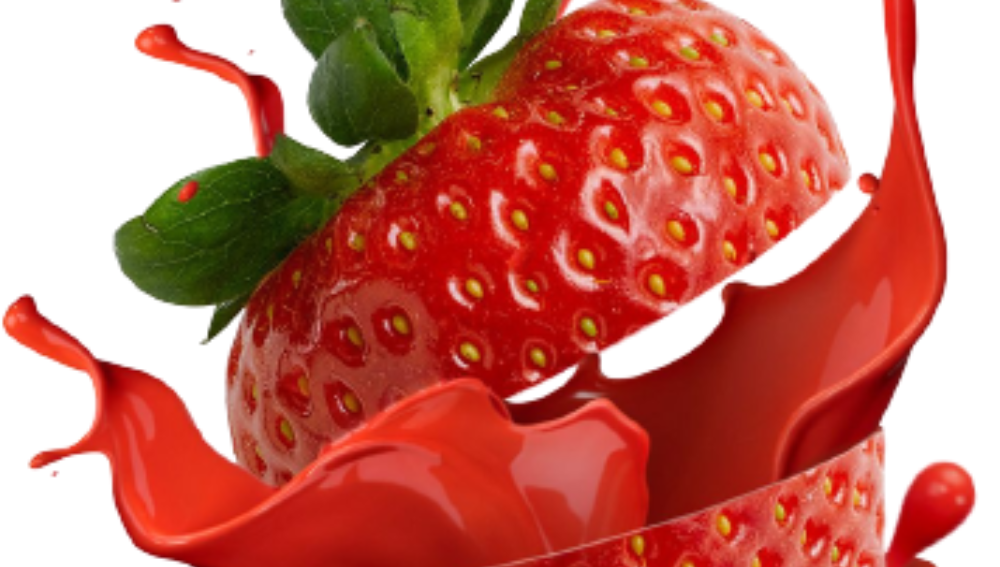
Strawberry flavor is a combination of sweetness, tanginess, and a refreshing touch, making it a unique and sought-after taste.
When attempting to find a substitute for strawberries, it is essential to consider the components that contribute to this distinctive flavor.
The sweetness of strawberries comes from the natural sugars present in the fruit. As strawberries ripen, their sugar content increases, enhancing the overall sweetness.
This sweetness is one of the primary factors that draws people to strawberries, so finding an alternative that offers a similar level of sugar content is crucial.
In addition to sweetness, strawberries also possess a tangy, slightly acidic taste. This tanginess adds complexity and balance to the fruit’s flavor profile.
To replicate this aspect, it is essential to choose a substitute that has a similar level of acidity.
The refreshing aspect of strawberries is linked to their high water content and relatively mild flavor intensity.
This attribute allows strawberries to be enjoyed on their own or incorporated into a wide variety of dishes without overpowering other ingredients.
To find a suitable substitute, looking for a fruit with a similar refreshing quality is key.
There are several potential substitutes for strawberries that offer a similar balance of sweetness, tanginess, and refreshment. Some examples include:
- Raspberries: With their sweet, slightly tart flavor, raspberries can be a close match for strawberries. Additionally, they share a similar texture and can be used interchangeably in many recipes.
- Red currants: These small, red berries have a sweet and tangy taste that closely resembles the flavor of strawberries. They can be a suitable substitute in a variety of dishes.
- Cherries: Cherries are sweet and juicy, with a hint of tartness. Their refreshing quality and robust flavor make them an excellent alternative to strawberries.
To achieve a potent strawberry taste, one can consider combining a couple of these substitutes or mixing them with a small amount of strawberry extract or flavoring.
Don’t hesitate to experiment with different combinations to find the ideal substitute for your specific requirements.
Strawberry Products and Their Uses
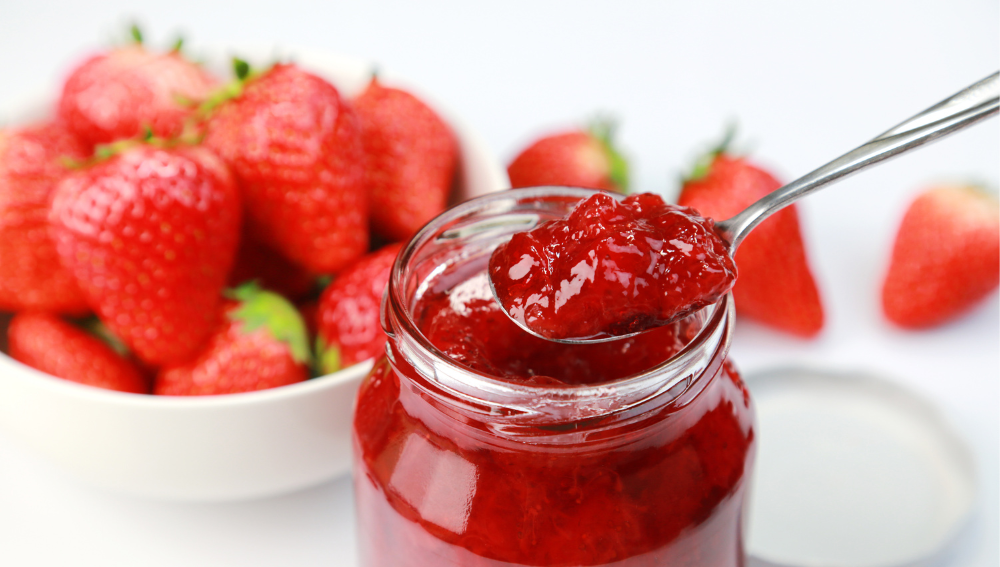
Strawberry products are versatile and can be used in a wide variety of dishes and beverages. They include items such as jam, ice cream, desserts, syrup, and yogurt, along with various canned and frozen products.
Strawberry jam and strawberry preserves are popular toppings for toast, waffles, and pastries. They differ slightly in composition, as preserves contain more whole fruit pieces.
Both are also used as filling for pies and desserts, providing a burst of fruity flavor.
Strawberry syrup and strawberry puree can be drizzled over pancakes, ice cream, and various desserts to enhance their taste.
These products can also be incorporated into drinks like milkshakes and cocktails, as well as being added to baked goods for a hint of strawberry flavor.
The beloved strawberry ice cream is a classic dessert choice, available in many variations including frozen yogurt or gelato. It can be enjoyed on its own or as part of a sundae, providing a refreshing taste of summer.
Strawberry yogurt is a widely-consumed snack and breakfast staple, often paired with granola or other fruits. It can also serve as a healthy base for smoothies and parfaits, striking a balance between creaminess and fruitiness.
Frozen strawberries come in handy when fresh strawberries are out of season, allowing for the continual enjoyment of strawberry-flavored dishes.
They can be used for making smoothies, pies, and desserts or simply thawed and enjoyed as a snack.
Strawberry liqueur is a delightful addition to cocktails, lending a sweet and fruity taste to various drinks. It can also be used in the preparation of desserts and sauces to add a special touch of strawberry flavor.
In addition to these products, there are other items like strawberry extract and strawberry-flavored candies that provide a burst of fruity flavor without the actual fruit.
These products offer a convenient and long-lasting alternative to fresh strawberries, making them a versatile choice for a variety of culinary uses.
Factors to Consider when Choosing a Substitute
When selecting the best substitute for strawberries, several key factors must be taken into account.
These factors can greatly impact whether a specific alternative can closely emulate the properties of strawberries and maintain an enjoyable taste and texture in recipes.
Color: One of the many appealing aspects of strawberries is their vibrant red color. When choosing a substitute, finding a fruit or ingredient with a similar color can help maintain the dish’s visual appeal.
Options might include raspberries, cherries, or red currants.
Texture: Strawberries have a slightly soft and juicy texture which contributes to the overall mouthfeel of the dish. In order to achieve a similar texture, fruits like raspberries, blackberries, or even kiwi can be ideal replacements.
Flavor Profile: The taste of strawberries is a combination of sweet and tart flavors. When searching for a suitable alternative, it is essential to find fruits with a similar flavor profile.
Some choices to consider are raspberries, cherries, or even pomegranate seeds.
Seeds: Strawberries have small seeds that add texture to a dish. Seeds might be an important factor to mimic, depending on the dish being prepared.
Replacements with seeds could include raspberries or blackberries, while seedless fruits like red grapes or cherries could be used for those who prefer a smoother texture.
Consistency: The overall consistency of strawberries can be important for certain recipes. Strawberries can thicken the dish and give it a cohesive structure.
When selecting a replacement, fruits with a similar consistency, such as blueberries or cherries, might be suitable options.
Personal Preference: Ultimately, personal preference plays a significant role when choosing a substitute for strawberries.
Allergies, taste preferences, and dietary restrictions should all be considered when selecting the best alternative for an individual.
Carefully evaluating these factors will greatly support the decision-making process in selecting the most suitable substitute for strawberries.
By considering color, texture, flavor profile, seeds, consistency, and personal preference, it will be much easier to find the perfect alternative that meets the needs of the individual and the recipe.
Alternatives Within The Berries Family
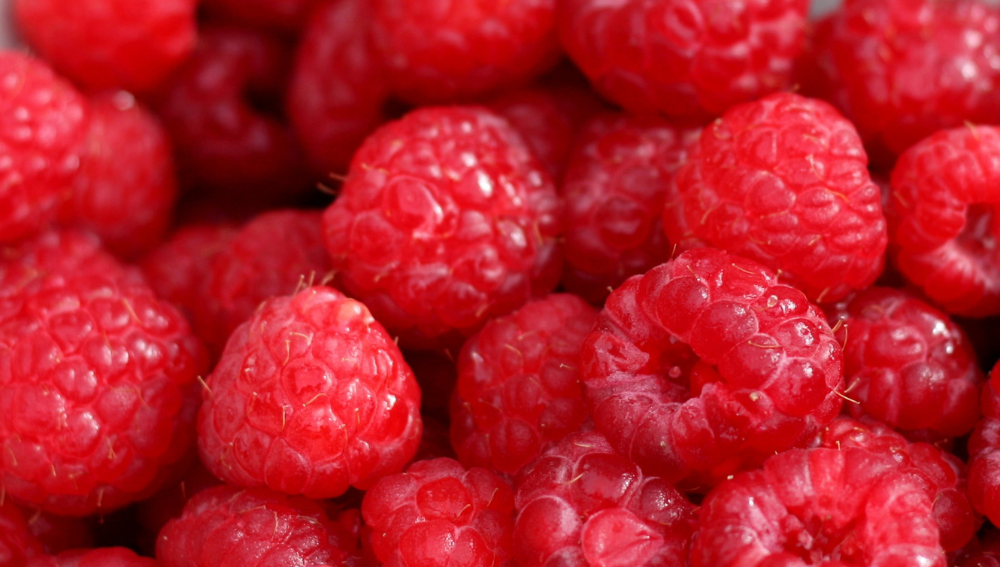
When looking for a suitable substitute for strawberries, there are several options within the berries family. These alternatives, such as raspberries, blackberries, blueberries, and cranberries, can provide similar flavors, textures, and health benefits.
Raspberries are an excellent option for a strawberry replacement. Their sweet, slightly tart flavor makes them a versatile substitute in many recipes, ranging from desserts to salads.
Raspberries’ bright red color and delicate texture also contribute to their visual appeal. These delightful berries are packed with vitamins and antioxidants, making them as nutritious as they are delicious.
Blackberries, with their deep, rich color, and bold flavor, can also serve as a substitute for strawberries. They not only enhance the taste profile of a dish but also add a touch of sophistication.
Blackberries work well in smoothies, jams, and sauces, as well as being an excellent choice for topping desserts. They come with health benefits, such as being rich sources of vitamin C and fiber.
Another within-berry substitute is blueberries, known for their sweet flavor and versatile nature. They can be used in a wide variety of dishes, such as pies, muffins, and parfaits. Blueberries’ deep blue color adds visual contrast to salads and desserts.
Additionally, they are praised for their high antioxidant content, which promotes overall health.
Lastly, cranberries can also be considered as an alternative to strawberries. Their tartness can add a unique twist to recipes that normally call for the sweetness of strawberries.
Cranberries work exceptionally well in sauces, chutneys, and baked goods. Moreover, these berries are praised for their numerous health benefits, such as supporting the immune system and promoting urinary tract health.
In summary, various berries, including raspberries, blackberries, blueberries, and cranberries, serve as viable substitutes for strawberries. Each berry brings its unique flavor, color, and health benefits to the table.
Beyond Berries: Other Fruits as Substitutes
Sometimes, a recipe may call for strawberries, but they might not be available or you’re just not a fan of them. Fear not; there are various other fruits that can serve as a suitable substitute in terms of taste, texture, and appearance.
The following fruits can make an excellent stand-in for strawberries in your recipes.
Kiwi is a versatile fruit that resembles the taste of strawberries; it’s tangy and sweet, making it an ideal replacement.
The green flesh of kiwi can add a vibrant color twist to recipes, and their seeds can mimic the texture of strawberry seeds.
Another great fruit to use as a substitute for strawberries is rhubarb. While technically a vegetable, rhubarb is often used in desserts and sweet dishes due to its fruity flavor.
It has a tartness similar to strawberries, and when cooked down with sugar, rhubarb can create the perfect balance between sweet and tangy flavors.
Figs can also serve as a delicious strawberry substitute. Fresh figs have a soft texture, similar to ripe strawberries, and they offer a mild sweet taste. Dried figs also work well, as their natural sweetness becomes more concentrated.
If you’re using figs in a recipe that calls for strawberries, slicing or mashing them will help mimic the texture of the original berry.
For a tropical twist, consider using mango as a substitute for strawberries. Mangoes have a juicy texture, a vibrant color, and a sweet taste with a hint of tartness that can elevate your recipe.
Dice or slice the mango into smaller pieces to use as a replacement in fruit salads or desserts.
Pineapple, another tropical fruit, has a unique tangy and sweet flavor that can serve as a substitute for strawberries.
Fresh pineapple offers a crunchy, juicy texture, while canned pineapple can provide a softer, more strawberry-like consistency.
Lastly, when it comes to replacing strawberries in a salad or dessert, consider opting for a fruit salad with a diverse mix of fruits like berries, melons, and grapes.
This can create a new flavor profile while maintaining the refreshing quality that strawberries bring to the dish.
In conclusion, there are several fruits that can be used to substitute for strawberries, whether you’re missing the key ingredient or simply looking for a change of pace.
Experiment with these alternatives to find the perfect replacement for your recipe and enjoy the medley of flavors they bring to the table.
Dealing with Allergies and Dietary Restrictions

When seeking a substitute for strawberries, it is vital to consider any potential allergies and dietary restrictions.
Some individuals might have allergies to specific fruits or may require certain levels of essential nutrients like fiber, vitamins, and antioxidants.
For those allergic to strawberries, it is important to find alternative fruits that offer similar health benefits without causing an adverse reaction.
Blueberries and raspberries are excellent choices, as they are both rich in antioxidants, vitamin C, and fiber. These berries can easily replace strawberries in recipes while maintaining a delicious taste.
People with dietary restrictions should also pay attention to the nutritional content of fruit substitutes.
For example, an individual on a low-sugar diet might prefer blackberries as they contain 4.8 grams of sugar per 100 grams, compared to strawberries with their 4.9 grams per 100 grams.
The minimal difference in sugar content ensures a slight reduction while still providing essential nutrients.
When considering vitamin and antioxidant content, fruits such as kiwi and papaya make great substitutes for strawberries. Kiwi provides a significant amount of vitamin C and also contains vitamin E and K.
Similarly, papaya is packed with vitamin C, A, and E, while also being abundant in antioxidants.
In summary, when dealing with allergies and dietary restrictions, it is crucial to explore various fruit options to find the best substitute for strawberries.
With a little research and consideration, one can easily find delicious and nutritious alternatives that suit their needs.
Culinary Applications of Substitutes
Finding the perfect substitute for strawberries can enhance various recipes in the kitchen. From baking delights to savory dishes, you can elevate your culinary creations by using versatile alternatives.
This section provides a range of options to use in place of strawberries.
In baking, raspberries can often be a direct replacement for strawberries. They bring a similar taste and texture, making them ideal for various baked goods like muffins and cobblers.
Blueberries also work well in baking recipes, imparting a slightly different flavor profile that complements the dish.
For jams and sauces, using a combination of fruits like raspberries, blackberries, and cherries can provide a rich, complex flavor.
Mixing these fruits creates a balance that is both sweet and tart, making it an excellent replacement for strawberries in these applications.
When crafting smoothies, feel free to get creative with your fruit combinations. Mangoes, pineapples, and peaches can all add bright, tropical flavors that work well in place of strawberries.
Alternatively, you can use a blend of berries like blueberries, raspberries, and blackberries to create a rich, nutritious concoction.
Pancakes and muffins can benefit from using alternative fruits as well. Blueberries and raspberries are popular choices for these recipes, providing a burst of flavor without overpowering the dish.
However, diced peaches or bananas can add a creative twist, offering a diverse range of tastes for everyone to enjoy.
In terms of decoration and garnish, there are many visually appealing substitutes for strawberries. Edible flowers, such as nasturtiums or pansies, can add a pop of color and elegance to your dishes.
In addition, fruit like raspberries, blackberries, and kiwi slices can create an aesthetic balance that is both visually appealing and delicious.
Lastly, for dishes like cobblers and crumbles where strawberries might typically be featured, try substituting them with other berries, such as blueberries or a mixed berry blend.
These alternatives will provide a similar texture and complexity while maintaining the core essence of the dish.
Remember that confident and knowledgeable cooking requires flexibility and creativity, allowing you to experiment with different ingredients to achieve the best results.
Unconventional Substitutes
Sometimes, the traditional substitutes for strawberry, like other berries or fruit purees, might not be available or desired.
In such cases, there are a few unconventional substitutes that can be explored to achieve a similar flavor and texture.
The alternatives discussed in this section include almond extract, raspberry extract, cherry extract, liqueur, alcohol, cornstarch, and dry freeze flakes.
Almond extract and raspberry extract are popular choices in the baking world to provide a fruity flavor when strawberries are not an option.
These extracts bring unique tastes, with almond extract adding a nutty aroma and raspberry extract offering a fruity, slightly tart touch.
However, they may not be an ideal option if you want to retain the distinctly sweet taste of strawberries.
Cherry extract can make a reasonable substitute for strawberry extract in recipes where a fruity flavor is essential. Although cherries have a more assertive taste than strawberries, they can still lend their sweet-tart nature to your dish.
Liqueurs and alcohol can also serve as unconventional substitutes for strawberries. Fruit-flavored liqueurs, such as cherry or blackberry, can add depth to dishes like desserts and sauces.
These options lend a subtle hint of fruitiness and an extra layer of complexity. However, it’s important to consider the additional taste from the alcohol.
Cornstarch is an option to consider when aiming to replicate the texture of strawberries in a recipe. While it may not provide any fruity flavor, adding a small amount of cornstarch can help thicken sauces and other preparations to resemble a strawberry puree’s consistency.
Dry freeze flakes are another unconventional substitute that can offer a fruity flavor with the advantage of a longer shelf life.
For recipes that don’t require fresh strawberries or their juice, these flakes can add a concentrated taste without requiring any immediate preparation.
Conclusion
In the realm of culinary creativity, finding a delightful substitute for strawberries can be an exciting journey. With the wide range of readily available fruits, it is possible to thoroughly explore different options to achieve the desired taste and visual appeal in recipes.
Some popular substitutes include raspberries, cherries, and blueberries, which offer both vibrant colors and unique flavors.
These fruits are commonly found in grocery stores, ensuring the availability for experimentation in various dishes.
In conclusion, expanding one’s horizons in the kitchen allows for the discovery of new, delightful substitutes for strawberries.
With a confident and knowledgeable approach, coupled with readily available options, the journey of culinary creativity can be both enjoyable and fruitful.
Frequently Asked Questions
What fruit can replace strawberries in recipes?
Many fruits can be successfully used as a substitute for strawberries in recipes. Some popular options include raspberries, blueberries, blackberries, cherries, and red currants.
These fruits share similar flavor profiles or textures, making them suitable replacements. Adjustments may be needed since every fruit has its unique properties.
What is a suitable substitute for strawberry syrup?
Several options can be used in place of strawberry syrup. Raspberry or blueberry syrup can offer a similar fruity taste, while grenadine syrup provides a more subtle berry flavor.
For a more neutral syrup base, one can use simple syrup combined with fruit-juice or a fruit extract to create a desired flavor.
How can I make a smoothie without strawberries?
A smoothie without strawberries can be just as delicious and nutritious. Try using alternative fruits such as bananas, raspberries, blueberries, mangoes, or kiwi to replace strawberries in your recipe.
Experiment with different combinations of fruits to find the flavors that suit your taste best.
What alternatives can be used for those with a strawberry allergy?
For individuals with a strawberry allergy, alternative fruits such as raspberries, blueberries, cherries, or even grapes can be a good substitute.
It’s essential to be aware of potential cross-reactivities and ensure that the replacement fruit does not trigger any allergies. Consult a dietitian or allergist for personalized advice.
How can I create strawberry flavor without using the actual fruit?
Creating a strawberry flavor without using the actual fruit can be achieved with extracts or flavorings. Strawberry extracts, both natural and artificial, are available to imitate strawberry taste.
These can be added to recipes that require strawberry flavor, such as baked goods, desserts, or beverages.
Which fruit has a similar taste profile to strawberries?
While no fruit has an identical taste to strawberries, some fruits share similar flavor profiles. Raspberries, cherries, and red currants are among the closest in flavor to strawberries.
Experimenting with these fruits or a combination of them can help achieve a taste that resembles that of strawberries.


